-
 Bitcoin
Bitcoin $84,993.8786
0.34% -
 Ethereum
Ethereum $1,599.9353
1.27% -
 Tether USDt
Tether USDt $0.9999
-0.01% -
 XRP
XRP $2.0813
0.78% -
 BNB
BNB $592.4105
0.82% -
 Solana
Solana $138.1937
3.17% -
 USDC
USDC $1.0000
0.00% -
 Dogecoin
Dogecoin $0.1589
2.71% -
 TRON
TRON $0.2413
-1.55% -
 Cardano
Cardano $0.6307
2.60% -
 UNUS SED LEO
UNUS SED LEO $9.3881
1.71% -
 Chainlink
Chainlink $12.8366
1.65% -
 Avalanche
Avalanche $19.2740
1.26% -
 Stellar
Stellar $0.2445
1.24% -
 Toncoin
Toncoin $2.9868
-0.07% -
 Shiba Inu
Shiba Inu $0.0...01221
3.10% -
 Hedera
Hedera $0.1669
0.87% -
 Sui
Sui $2.1351
1.39% -
 Bitcoin Cash
Bitcoin Cash $336.8750
2.70% -
 Hyperliquid
Hyperliquid $18.0804
6.57% -
 Polkadot
Polkadot $3.7246
1.15% -
 Litecoin
Litecoin $76.4144
1.52% -
 Dai
Dai $0.9999
0.00% -
 Bitget Token
Bitget Token $4.4597
2.23% -
 Ethena USDe
Ethena USDe $0.9992
0.00% -
 Pi
Pi $0.6437
5.71% -
 Monero
Monero $212.9449
-1.50% -
 Uniswap
Uniswap $5.2448
1.29% -
 Pepe
Pepe $0.0...07289
2.88% -
 OKB
OKB $50.8316
2.01%
What is the forced liquidation mechanism of BitFlyer?
BitFlyer's forced liquidation mechanism closes positions automatically when margin levels drop below the maintenance requirement to protect traders and the exchange from losses.
Apr 16, 2025 at 04:35 am

The forced liquidation mechanism is a critical aspect of trading on cryptocurrency exchanges like BitFlyer. This mechanism is designed to protect both the trader and the exchange from excessive losses that could arise from highly volatile market conditions. In this article, we will explore the forced liquidation mechanism of BitFlyer in detail, including how it works, the conditions under which it is triggered, and the steps that traders can take to avoid it.
Understanding Forced Liquidation
Forced liquidation is a process that occurs when a trader's position is automatically closed by the exchange due to insufficient margin to cover potential losses. This mechanism is particularly important in the context of margin trading, where traders can borrow funds from the exchange to increase their trading power. If the market moves against a trader's position, the value of their collateral may fall below the required maintenance margin, triggering a forced liquidation.
How Forced Liquidation Works on BitFlyer
On BitFlyer, the forced liquidation mechanism is designed to ensure that the exchange can recover the borrowed funds and minimize its risk exposure. When a trader's position is at risk of causing a significant loss, BitFlyer will automatically close the position to prevent further losses. The specific steps involved in the forced liquidation process are as follows:
- Monitoring Margin Levels: BitFlyer continuously monitors the margin levels of all open positions. If the margin level falls below the maintenance margin requirement, the exchange will initiate the liquidation process.
- Liquidation Order: Once the margin level breaches the threshold, BitFlyer will place a liquidation order to close the position at the best available market price. This order is executed automatically to prevent further losses.
- Settlement: After the position is closed, the proceeds from the liquidation are used to repay the borrowed funds. Any remaining balance is returned to the trader's account.
Conditions for Forced Liquidation on BitFlyer
The conditions under which forced liquidation is triggered on BitFlyer are primarily related to the margin level of the trader's account. Here are the key factors that can lead to forced liquidation:
- Maintenance Margin Requirement: BitFlyer sets a maintenance margin requirement that traders must meet to keep their positions open. If the value of the collateral falls below this level, the position will be liquidated.
- Market Volatility: High volatility in the cryptocurrency market can lead to rapid changes in the value of a trader's position. If the market moves against the trader's position, the margin level may drop below the required threshold, triggering liquidation.
- Leverage: Trading with high leverage increases the risk of forced liquidation. Higher leverage means smaller market movements can significantly impact the margin level, making it more likely for the position to be liquidated.
Steps to Avoid Forced Liquidation on BitFlyer
Traders can take several steps to minimize the risk of forced liquidation on BitFlyer. Here are some strategies to consider:
- Monitor Margin Levels: Regularly check the margin level of your open positions to ensure it remains above the maintenance margin requirement. Use BitFlyer's trading tools to track your margin levels in real-time.
- Use Stop-Loss Orders: Implement stop-loss orders to automatically close your positions if the market moves against you. This can help prevent your margin level from falling below the required threshold.
- Adjust Leverage: Consider using lower leverage to reduce the risk of forced liquidation. Lower leverage means smaller market movements are less likely to trigger liquidation.
- Diversify Your Portfolio: Diversify your trading portfolio to spread risk across different assets. This can help mitigate the impact of adverse market movements on your margin levels.
Impact of Forced Liquidation on Traders
Forced liquidation can have significant implications for traders on BitFlyer. Understanding these impacts can help traders better manage their risk and trading strategies. Here are some key considerations:
- Loss of Position: The most immediate impact of forced liquidation is the loss of the trader's position. Once the position is closed, the trader will no longer have exposure to the asset.
- Financial Loss: Forced liquidation can result in financial losses for the trader, especially if the liquidation occurs at an unfavorable market price. The proceeds from the liquidation may not be enough to cover the borrowed funds, resulting in a deficit.
- Impact on Trading Strategy: Frequent forced liquidations can disrupt a trader's overall trading strategy. Traders may need to adjust their approach to manage risk more effectively and avoid future liquidations.
Case Studies of Forced Liquidation on BitFlyer
To illustrate how forced liquidation works in practice, let's consider a few hypothetical case studies based on BitFlyer's mechanism:
- Case Study 1: A trader opens a long position on Bitcoin with 10x leverage. The market suddenly drops by 10%, causing the margin level to fall below the maintenance margin requirement. BitFlyer automatically closes the position, resulting in a loss for the trader.
- Case Study 2: A trader uses 5x leverage to short Ethereum. The market unexpectedly rises by 15%, triggering a forced liquidation. The trader's position is closed at a loss, and the proceeds are used to repay the borrowed funds.
- Case Study 3: A trader with a diversified portfolio of cryptocurrencies experiences a significant drop in the value of one asset. However, the overall margin level remains above the maintenance margin requirement, avoiding forced liquidation.
Frequently Asked Questions
Q: Can I set a custom liquidation threshold on BitFlyer?
A: No, BitFlyer does not allow traders to set custom liquidation thresholds. The maintenance margin requirement is set by the exchange and applies to all traders.
Q: What happens if the market moves rapidly and the liquidation order cannot be filled at the desired price?
A: In such cases, BitFlyer will attempt to close the position at the best available market price. If the market is highly volatile, the liquidation price may be less favorable, resulting in a larger loss for the trader.
Q: Can I reopen a position immediately after it has been liquidated?
A: Yes, you can reopen a position after it has been liquidated, but you will need to ensure that you have sufficient funds and margin to meet the exchange's requirements.
Q: How can I track my margin levels on BitFlyer?
A: You can track your margin levels on BitFlyer by using the trading platform's real-time margin monitoring tools. These tools provide up-to-date information on your margin levels and help you stay informed about your positions.
Disclaimer:info@kdj.com
The information provided is not trading advice. kdj.com does not assume any responsibility for any investments made based on the information provided in this article. Cryptocurrencies are highly volatile and it is highly recommended that you invest with caution after thorough research!
If you believe that the content used on this website infringes your copyright, please contact us immediately (info@kdj.com) and we will delete it promptly.
- Codename:Pepe dips 30% from March highs, sparking investor interest in Codename:Pepe's AI-powered alternative.
- 2025-04-19 14:20:14
- Despite Its Elevated Position as the World's Premier Meme Coin, Dogecoin (DOGE) Has Been Struggling
- 2025-04-19 14:20:13
- Market Update: Crypto Market Remains Steady at $2.79 Trillion with Minimal 0.14% Growth
- 2025-04-19 14:15:13
- Can Mantra (OM) Bounce Back? How High Can the Price Go After 90% Crash?
- 2025-04-19 14:15:13
- President Donald Trump Said at a 2024 Campaign Event That He Wanted All Remaining Bitcoin
- 2025-04-19 14:10:13
- Qubetics ($TICS): The New Frontier in Blockchain Interoperability
- 2025-04-19 14:10:13
Related knowledge
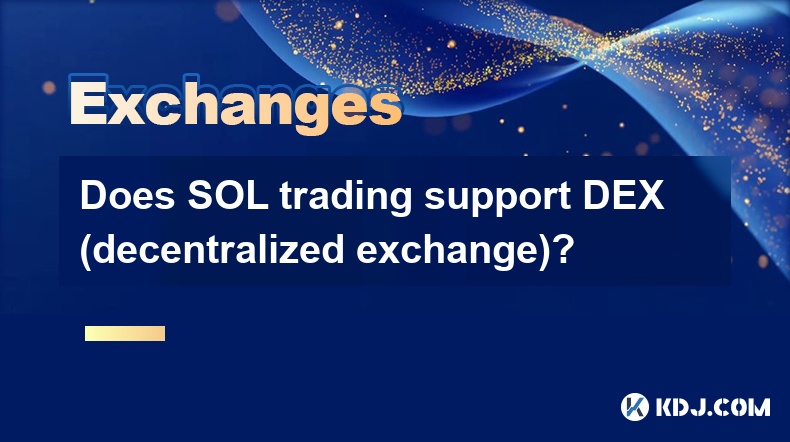
Does SOL trading support DEX (decentralized exchange)?
Apr 19,2025 at 05:21am
Solana (SOL), a high-performance blockchain platform, has gained significant attention in the cryptocurrency community for its fast transaction speeds and low fees. One of the key aspects that traders and investors often inquire about is whether SOL trading supports decentralized exchanges (DEXs). In this article, we will explore this topic in detail, p...
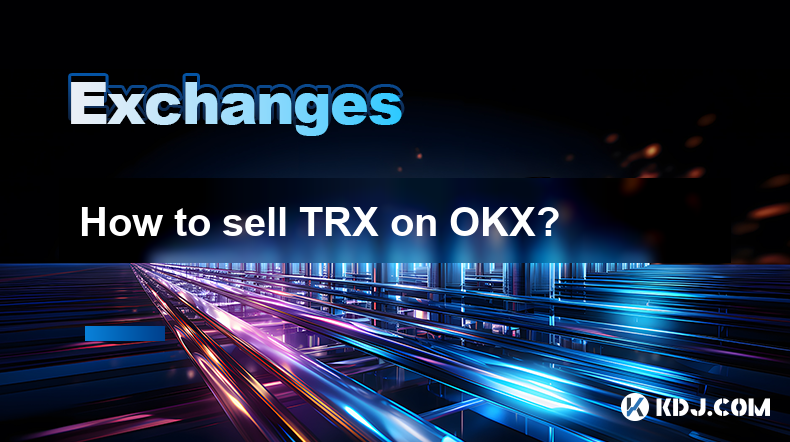
How to sell TRX on OKX?
Apr 18,2025 at 11:07pm
Selling TRX on OKX is a straightforward process that can be completed in a few simple steps. This article will guide you through the entire process, ensuring that you understand each step thoroughly. Whether you are a beginner or an experienced trader, this guide will help you navigate the OKX platform with ease. Preparing to Sell TRX on OKXBefore you c...
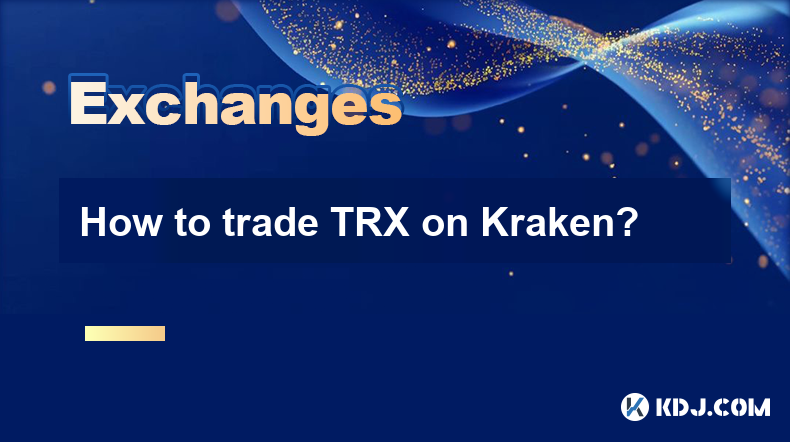
How to trade TRX on Kraken?
Apr 19,2025 at 02:00am
Trading TRX on Kraken involves several steps, from setting up your account to executing your first trade. Here's a detailed guide on how to get started and successfully trade TRX on the Kraken platform. Setting Up Your Kraken AccountBefore you can start trading TRX on Kraken, you need to set up an account. Here's how to do it: Visit the Kraken website a...
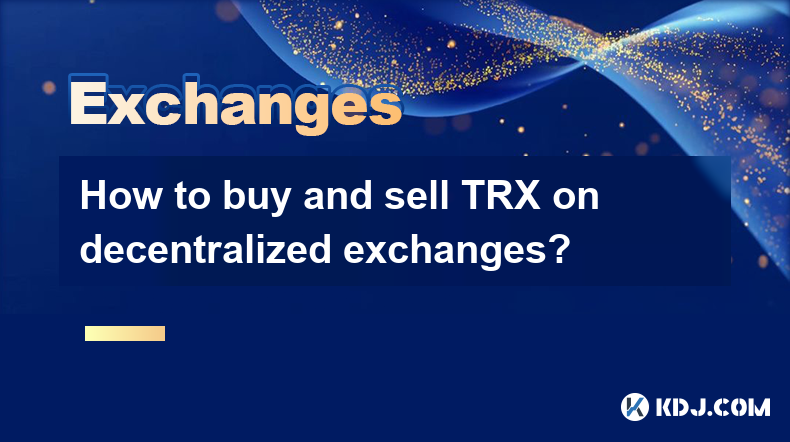
How to buy and sell TRX on decentralized exchanges?
Apr 18,2025 at 08:08pm
Introduction to TRX and Decentralized ExchangesTRX, or Tron, is a popular cryptocurrency that aims to build a decentralized internet and entertainment ecosystem. Decentralized exchanges (DEXs) offer a way to trade cryptocurrencies like TRX without the need for a central authority, providing greater privacy and control over your funds. In this article, w...
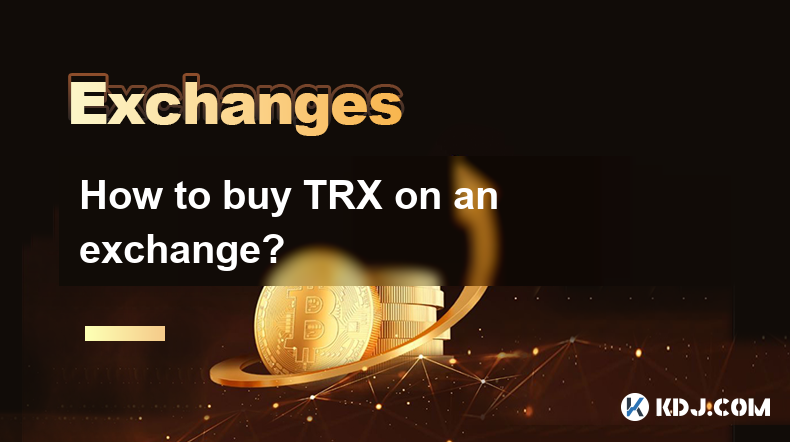
How to buy TRX on an exchange?
Apr 19,2025 at 12:08pm
Buying TRX, the native cryptocurrency of the Tron network, on an exchange is a straightforward process that involves several key steps. This guide will walk you through the process of purchasing TRX, ensuring you understand each step thoroughly. Choosing a Reliable ExchangeBefore you can buy TRX, you need to select a reputable cryptocurrency exchange th...
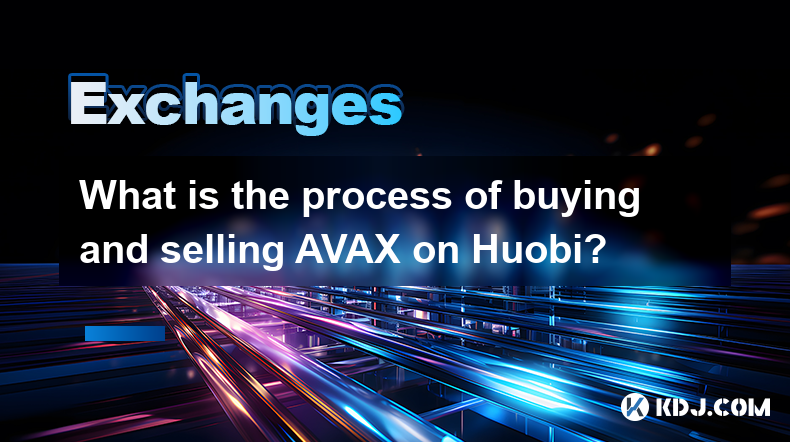
What is the process of buying and selling AVAX on Huobi?
Apr 18,2025 at 07:50pm
Understanding AVAX and Huobi Before diving into the process of buying and selling AVAX on Huobi, it's essential to understand what these terms mean. AVAX is the native cryptocurrency of the Avalanche blockchain, a platform designed for decentralized applications and custom blockchain networks. Huobi, on the other hand, is a leading global cryptocurrency...

Does SOL trading support DEX (decentralized exchange)?
Apr 19,2025 at 05:21am
Solana (SOL), a high-performance blockchain platform, has gained significant attention in the cryptocurrency community for its fast transaction speeds and low fees. One of the key aspects that traders and investors often inquire about is whether SOL trading supports decentralized exchanges (DEXs). In this article, we will explore this topic in detail, p...

How to sell TRX on OKX?
Apr 18,2025 at 11:07pm
Selling TRX on OKX is a straightforward process that can be completed in a few simple steps. This article will guide you through the entire process, ensuring that you understand each step thoroughly. Whether you are a beginner or an experienced trader, this guide will help you navigate the OKX platform with ease. Preparing to Sell TRX on OKXBefore you c...

How to trade TRX on Kraken?
Apr 19,2025 at 02:00am
Trading TRX on Kraken involves several steps, from setting up your account to executing your first trade. Here's a detailed guide on how to get started and successfully trade TRX on the Kraken platform. Setting Up Your Kraken AccountBefore you can start trading TRX on Kraken, you need to set up an account. Here's how to do it: Visit the Kraken website a...

How to buy and sell TRX on decentralized exchanges?
Apr 18,2025 at 08:08pm
Introduction to TRX and Decentralized ExchangesTRX, or Tron, is a popular cryptocurrency that aims to build a decentralized internet and entertainment ecosystem. Decentralized exchanges (DEXs) offer a way to trade cryptocurrencies like TRX without the need for a central authority, providing greater privacy and control over your funds. In this article, w...

How to buy TRX on an exchange?
Apr 19,2025 at 12:08pm
Buying TRX, the native cryptocurrency of the Tron network, on an exchange is a straightforward process that involves several key steps. This guide will walk you through the process of purchasing TRX, ensuring you understand each step thoroughly. Choosing a Reliable ExchangeBefore you can buy TRX, you need to select a reputable cryptocurrency exchange th...

What is the process of buying and selling AVAX on Huobi?
Apr 18,2025 at 07:50pm
Understanding AVAX and Huobi Before diving into the process of buying and selling AVAX on Huobi, it's essential to understand what these terms mean. AVAX is the native cryptocurrency of the Avalanche blockchain, a platform designed for decentralized applications and custom blockchain networks. Huobi, on the other hand, is a leading global cryptocurrency...
See all articles
























































































